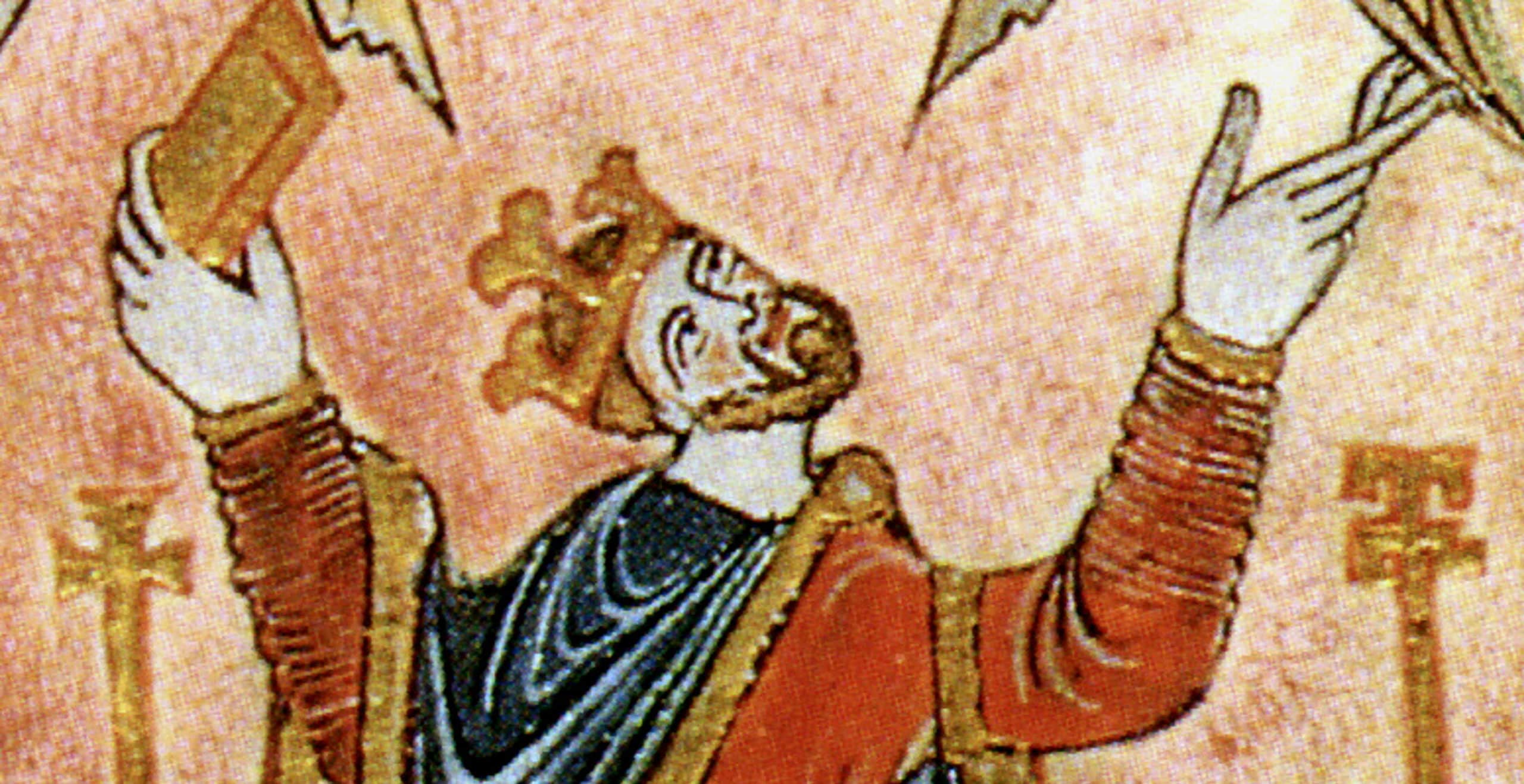On 23rd November 955, Eadwig inherited the Anglo-Saxon throne and with it the responsibility of maintaining his position against incoming threats.
Whilst his ancestors faced continuous Viking incursions, his was a reign relatively unchallenged by the Great Heathen Army, instead, he had to look closer to come to see where his challenges would emerge.
King Eadwig unlike his younger brother Edgar the Peaceful, did not leave behind such a good record of medieval kingship. After a short four year reign which was interrupted by a division of the kingdom between himself and his brother, Eadwig passed away, leaving behind a legacy of fractious relationships and instability.

Born around 940, as the eldest son of King Edmund I, Eadwig was destined to inherit the throne. He was the eldest of three children resulting from the union of King Edmund I and his first wife, Aelgifu of Shaftesbury. When he and his siblings were still very young, their father passed away. Edmund’s death at the hands of an outlaw in Gloucestershire in May 946 resulted in Edmund’s younger brother Eadred succeeding the throne, as all of the children were too young to rule.
King Eadred’s reign lasted a decade however he suffered from ill-health and died in his early 30s, leaving the throne to his young nephew Eadwig in 955 when he was only fifteen years old.
Almost immediately, Eadwig gained a rather undesirable reputation, particularly amongst those advisors who were close to the Crown such as the future St Dunstan, Abbot of Glastonbury.
At fifteen years of age, he was well-known as an attractive young royal and at his coronation in 956 in Kingston upon Thames he quickly developed an unattractive persona.
According to reports, he left the council chamber during his feast in order to entertain instead the charms of a woman. Upon noticing his absence, Dunstan went looking for the king only to find him in the company of a mother and daughter.

Such activities were not only against royal protocol but contributed to Eadwig’s image as an irresponsible king. Moreover, such was the schism created by his actions that the relationship between Eadwig and Dunstan would be irrevocably damaged and remain fraught with tension for the remainder of his time as king.
Many of the problems incurred by Eadwig were a result of the powerful people who had held much sway in court during the time of King Eadred. This included his grandmother Eadgifu, Archbishop Oda, Dunstan and Aethelstan, Ealdorman of East Anglia who at the time was often referred to as the Half-King, denoting his power. With so many notable factions at play within the royal court he inherited, a young teenage Eadwig was quick to make the distinction between his uncle’s reign and his own.
When Eadwig appeared on the scene he wanted to recalibrate the royal court to assert his independence and distance himself from the various parties in court who looked for more continuity with the reign of King Eadred.
In order to proclaim his independence he reduced the power of those around him including Eadgifu, his grandmother, ridding her of her possessions. The same was done to Aethelstan, Half-King who saw his authority dwindle.
By making new appointments and reducing the influence of the older order, he hoped to gain more authority and control.
This extended to his choice of bride, as Aelgifu, the younger female involved in his controversial encounter at his coronation ceremony was chosen by Eadwig. Such a choice would have consequences, as the church disapproved of the union, citing reasons that the two individuals were in fact related to each other, as she was a cousin. Moreover, Aelgifu’s mother, Aethelgifu did not want to see her daughter’s prospects ruined by the condemnation of the church and thus pressured Eadwig to oust Dunstan from his position.
With Dunstan subsequently exiled to Flanders, Eadwig continued to gain notoriety from the way he handled the Church, something which permeated the narrative of his rule for years to come.
With further significant members of the Church alienated by the king, these fractures in relations became gaping chasms and ultimately led in 957 to Mercia and Northumbria pledging their allegiance to his more popular younger brother, Edgar.
At only fourteen years of age, Edgar’s reputation was already better than that of his brother and thus the support he garnered led in tangible terms to the splitting up of the kingdom.
Whilst King Eadwig was the rightful king, in order to prevent further contention and chaos during his short reign, his young brother Edgar was given control of the north whilst Eadwig retained Wessex and Kent.
The divisions of loyalty found themselves split along geographical boundaries demarcated by the River Thames.
Whilst the exact origins of this agreement remain unknown, the arrangement continued until Eadwig’s death two years later.
Only a year after his kingdom was split, Oda, the Archbishop of Canterbury succeeded in splitting Eadwig from his controversial choice of bride, Aelgifu. He was never to remarry and only a year following this arrangement and still a teenager, Eadwig passed away.
On 1st October 959, Eadwig’s death marked the end of a short and contentious reign characterised by instability and infighting.
He was subsequently buried at Winchester whilst his younger brother became King Edgar, later known as “the Peaceful”, ushering in a new era of stable leadership and overshadowing his older brother’s tumultuous reign.
Jessica Brain is a freelance writer specialising in history. Based in Kent and a lover of all things historical.
Published: 27th August 2022







